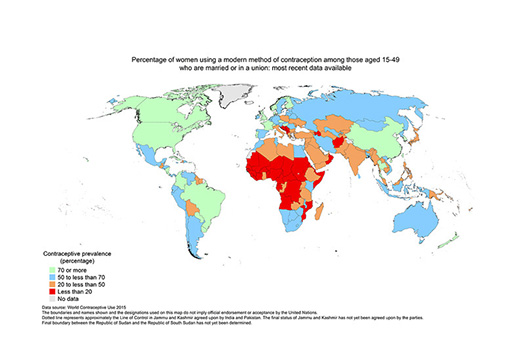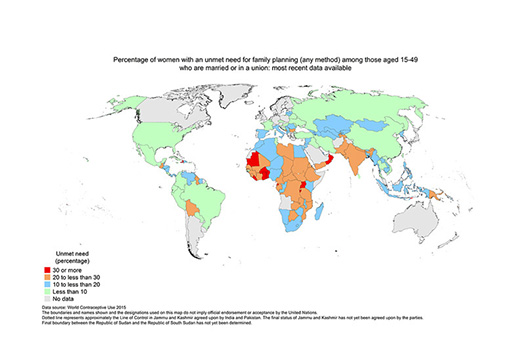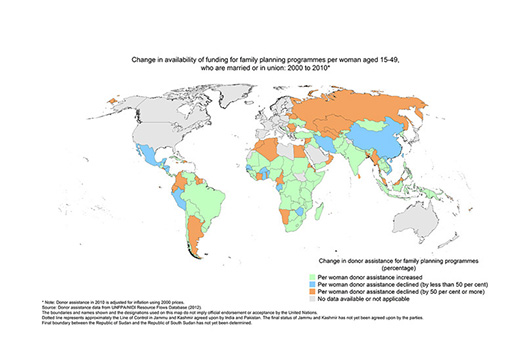5.3 Contraception and abortion worldwide
Forms of contraception and abortion have been used for thousands of years.
There is a long history of religions and states prohibiting either or both. Particular religions and many nation states have struggled to accept a fundamental shift in how men and women view sex that is contained within the availability of modern contraception. Now, in many parts of the world, contraception and abortion are provided within reproductive health services rather than debated as a moral decision.
Whilst almost every religion and society continues to deal with contraception and abortion controversies, a range of modern contraceptives are now available and safe abortion procedures are used by millions of women. However, as you will see in the maps below, both contraception choices and abortion rights remain dependent on where you live.
World contraception use
Nine out of every ten contraceptive users in the world rely on modern methods of contraception. But that still leaves 225 million women who are not able to choose to use modern contraceptive methods (UN, 2014). The map below shows the percentage of women using modern methods of contraception. You’ll notice that the lowest levels occur in developing countries, mainly in Africa, and poorer countries of Eastern Europe.

Many women’s needs for contraception are just not being met in some parts of the world. The percentage of women using a modern contraceptive method varies from as low as 4 per cent in South Sudan to 88 per cent in Norway. You may also have noticed that this data describes only women who are married or in a union. Women who are neither are likely to have unmet contraceptive needs that may in fact be higher than these collected and published figures.
The graph below shows countries by the percentage of women with unmet family planning needs. Unmet family planning needs are likely to describe access to contraceptives, but girls and women also need knowledge of what is available, information on how it works and an understanding of how to use it. You’ll notice that countries with the highest levels are developing countries. In fact, one out of every five women with an unmet need for modern methods of contraception live in developing regions.

The final graph of this section shown below shows how funding for family planning programmes has changed between 2000 and 2010. It’s encouraging to see funding increasing in developing countries, particularly as these are the same countries highlighted in the graph in Figure 15 where there were unmet needs.

So there remains a huge difference in people’s ability to make decisions that affect their lives based on where they live. For example, despite being an emerging world power with a newly industrialised economy, Mexico has some of the strictest abortion laws in the world. Both the pro-choice and the anti-choice campaigners claim their argument is based on human rights..
In the next section, you'll consider the rights and responsibilities surrounding abortion in your country.
